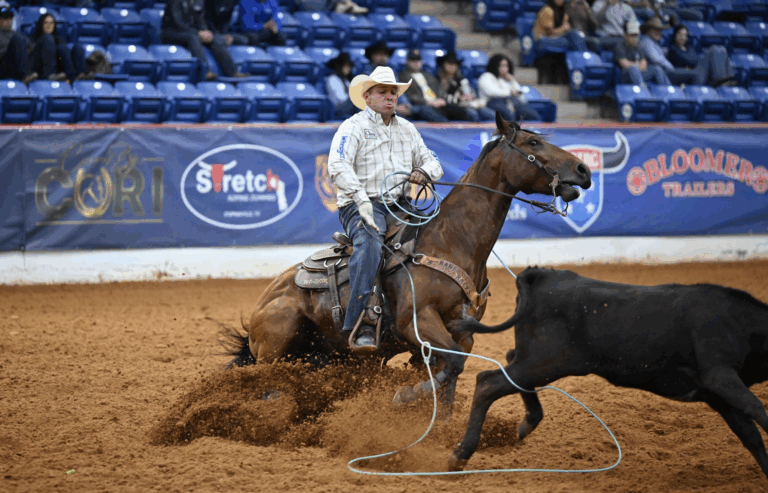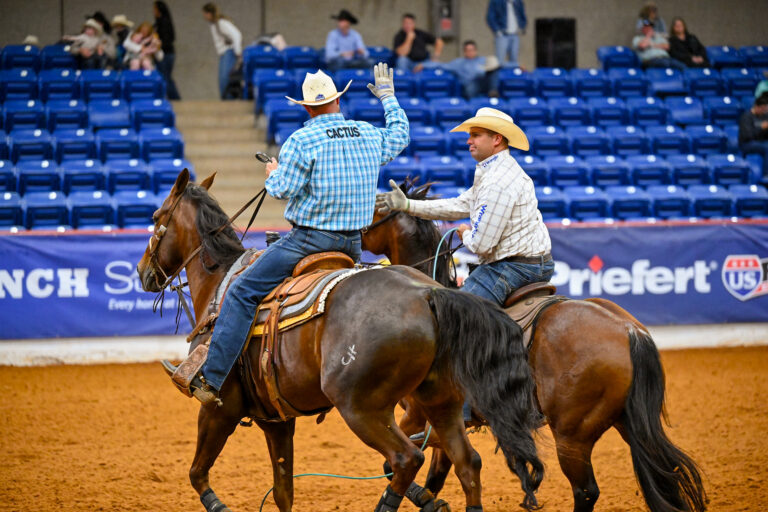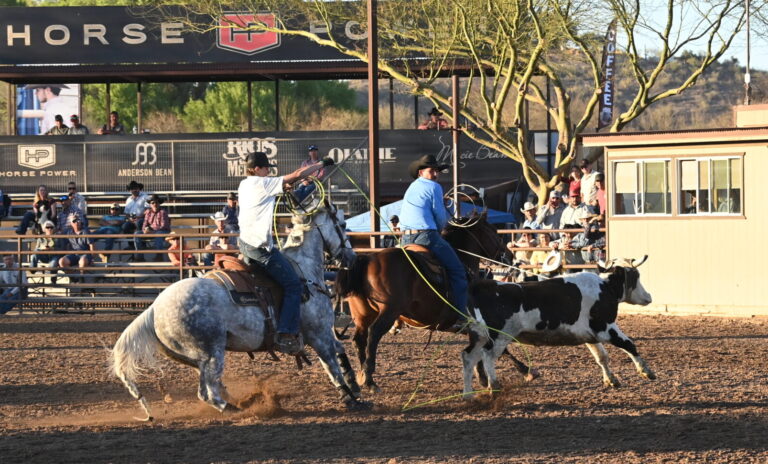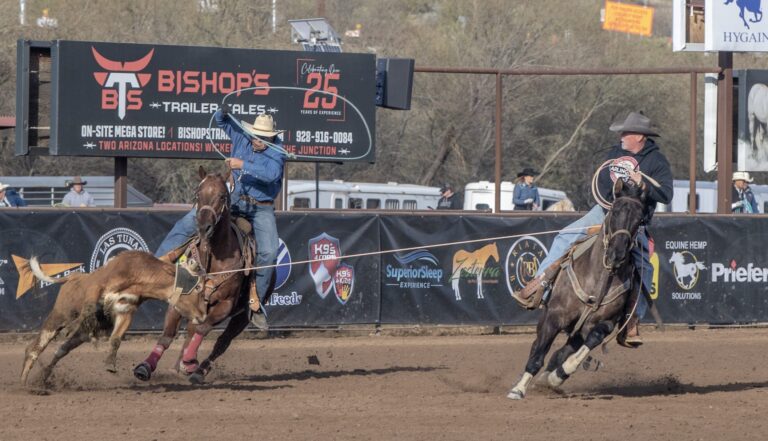Amo il team roping! Ich liebe team roping! I love team roping!
Congratulations. You’ve just completed your first course in talking team roping in three different languages, and chances are good that out of those first 16 words, you already understand eight. You’re halfway there, friend.
Next step: Book a flight. Across the world, ropings are being held each and every month of the year and you can find them in countries like Italy, Brazil, Germany, the Czech Republic, Mexico, Australia, and Canada. Even for those with an eye on the prize of competing in Las Vegas at the World Series of Team Roping Finale, there are no less than eight events in three countries—Italy, Germany, and Canada—to help achieve those goals.
In Europe, Mike Crouch is the founder of the European Team Roping Championships. The organization was formed in 2007, and by 2009, six of its Italian participants were Oklahoma-bound for the United States Team Roping Championships Cinch National Finals of Team Roping. The following year, the ETRC, which offers monthly ropings at its home facility in Ciconio, Italy, partnered up with the World Series of Team Roping and now offers three Finale qualifiers each year.
“For the last four or five years,” Crouch recalled, “we’ve had Europeans competing in Las Vegas.”
Each July, the Central European Qualifier is held at the 80-acre Twin-S Ranch in Mechelroda, Germany; and in April and September each year, qualifiers are held in the northern Italian town of Voghera, at the Cowboys’ Guest Ranch. Just as this issue went to press, the ranch was offering its 14,000 seats to spectators that could also purchase gear in the on-site Western Store and enjoy a cold beer or glass of wine at the Saloon, where live music adds to the authentic cowboy ambience. In the arena, Finale spots are awarded to first- and second-place winners in each division.
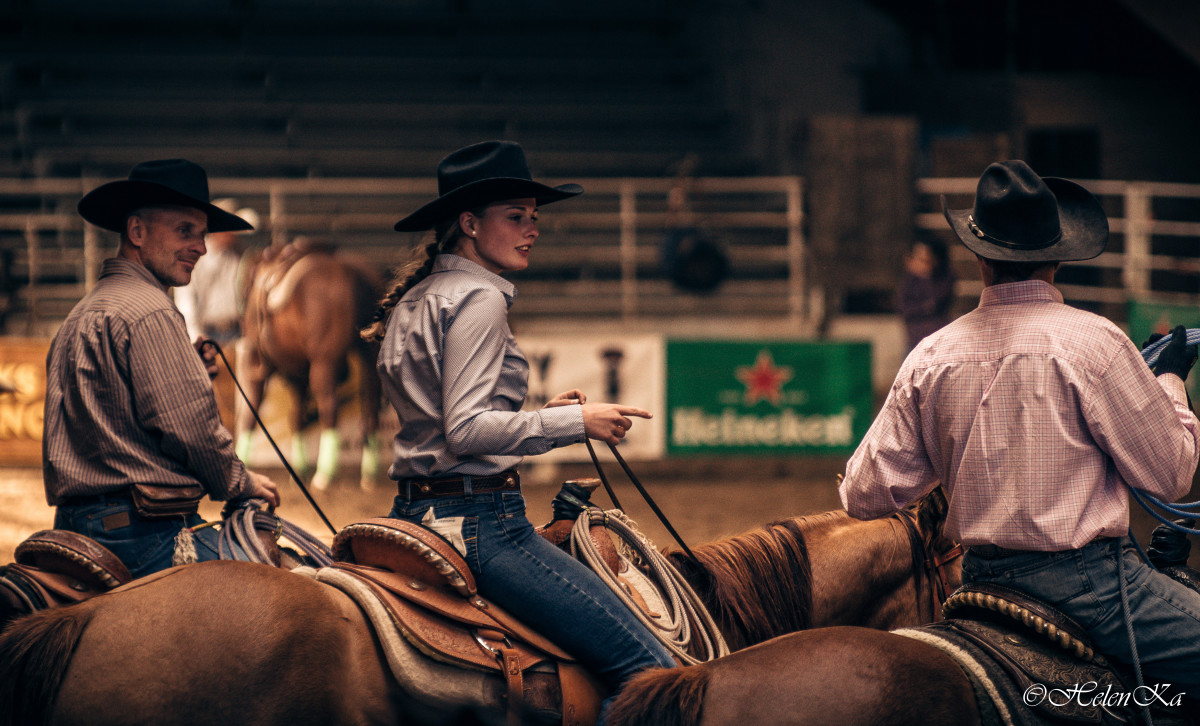
During the second half of the last century, Germany alone hosted more than 10 million U.S. military personnel. Of those troops, plenty were cowboys and the Western way planted its roots firmly in European soil. Particularly since the 1971 founding of the European Rodeo Cowboys Association, rodeos, reinings, cuttings, team ropings, and more have become an integral part of European fare.
This past April, Ty Yost, producer of the National Team Roping events, was vacationing in Italy with his wife, when some quick research determined they could make it to Voghera for the spring qualifier. Upon arriving, Yost recognized the facilities that had been the location of a Wild West Show he once produced, and he started seeing familiar sites—Rio Rancho ball caps, NTR buckles, and even a few familiar faces.
“There was a gentleman I knew who came over to Rio Rancho in Wickenburg last spring and had won a horse trailer,” Yost said of one of the European competitors.
He admits that the competition wasn’t quite as fierce as it is stateside, but credits Crouch for putting on an event where the announcing was done in three different languages (English, French, and Italian, on this occasion) and where everyone was having a really good time. Yost also remembers the particularly European twist to the roping, in which everyone was taking breaks, drinking beers and smoking cigarettes on their horses, calling to mind the nature of a long and relaxed European dinner, where there is no rush to clear the table. The priority remains to simply relax, eat, and enjoy.
For those considering giving a European roping a go, it would be wise to take such a cue from their international counterparts. Don’t go just for the roping. Take your time. Enjoy.
In Voghera, for instance, travelers are just a few hours from the enchanted canals of Venice or Michelangelo’s iconic David in Florence, and a mere 45 minutes from the fashion mecca of Milan (genuine Italian leather goods, anyone?). Even more charming are the slightly lesser known towns dotting the landscape and offering genuine Italian treasures like Pumpkin Tortelli, or Tortelli di Zucca, the traditional culinary luxury served in Mantua’s ristoranti.
Or, should your travels take you to the Twin-S Ranch (equipped with an outdoor arena, boarding facilities, and a Cantina) in July, Steffen Schorcht—owner of the ranch and founder of the Roping Association Central Europe, which produces eight ropings across Germany each year—recommends touring around the area in central Germany.
“We call it the Green Heart of Germany,” Schorcht revealed in an email, referring to the lushness of the area. “Americans can also see a lot of history. Weimar—the big city near my hometown—is more than 1,000 years old. We also have a lot of castles.”
Schorcht was introduced to team roping when he traveled to the now-closed Iron Horse Ranch in Tombstone, Ariz., for vacation in 1998.
“I met a man named Conny Chance,” Schorcht wrote. “He showed me team roping and from that first time, I thought, ‘I want to do that.’”
Schorcht, who grew up working with horses and cattle, took just a few short years to realize his dream of competing in Las Vegas. He finally qualified in 2013, but already had plans in place to travel to the USTRC’s Cinch NFTR in Oklahoma that year. He managed to qualify the following two years, as well, and made the long trip to Vegas both years “to rope for the big title and money.”
This year, Schorcht is once again Vegas bound and has his mind on remaining focused for the win.
“My experience,” Schorcht recalled, “was that the clearest mind wins over there. Everybody is there to win and this gives you a fantastic feeling.”
Of course, it should be said that roping abroad is not without its challenges, even for a competent and longtime roper like Yost.
“You have to be somewhat handy to get on somebody else’s horse and perform,” Yost noted of his impromptu Italian roping performance—a sentiment that likely rings just as true for ropers traveling to America and competing on horses borrowed from friends they’ve made over the years. “I was as nervous roping there as I had been in a while. I rode Crouch’s horse and I got the first steer and after that, no more jitters, but I’m an American cowboy and the expectations were probably high that I should catch.”
Other differences include the cattle—Maremmani are used in Italy, a native horned Italian breed likened to Longhorns—and that the demand for Quarter Horses in Europe has largely been a charge led by reiners and cutters. It’s a challenge that Crouch is well aware of and is making moves to address as he boards and trains horses at his own facility, the European Team Roping Center, located in Ciconio, just north of Turin and centrally nestled between the borders of Switzerland and France and the Ligurian Sea-city of Genoa.
“I’ve been over here for about 20 years and in the last three or four, it’s really taken off,” Crouch explained. “People from Germany, France, and Belgium have horses in training here. They fly in, stay with us for a few days, and fly out. We also have many Americans that rope with us here who either have jobs in Europe, or are members of the military, or are just on vacation.”
Horse culture in Europe is healthy and well-established. Children grow up learning dressage and equitation and when their families take multi-week vacations to the numerous guest ranches populating the American West, they are often paired with horses that require an advanced rider with a good seat, a steady leg, and soft hands. The difference, however, lies very much in the landscape. A simple Google search reveals maps showing nearly all of Europe fitting neatly inside the eastern half of the continental United States. For this reason, horses are boarded at facilities with arenas, turnout pastures, and stalls, and the image of the American cowboy riding across an open and unending landscape maintains a firm grip on the hearts of many European horsemen. And for these Europeans, it’s what makes Mike Crouch worth his weight in gold.
Crouch was born in Indiana and at age 5, his father went bankrupt on the farm. Crouch moved with him to Vega, Texas, just 45 miles west of Amarillo, and his dad ran the mill at the feedlot in nearby Willdorado, where a young Crouch got his roping start. When roping at the USTRC Finals at the Lazy E Arena in the early ’90s, Crouch auditioned for a position with the Euro Disney Buffalo Bill Wild West Show in Paris.
“When I got the call to go to Disney,” Crouch reminisced, “I was calving heifers on a ranch and I didn’t have a telephone out there, but at lunch, I would trot my horse over to another camp and they had a telephone. That’s how I got the call.”
Crouch stayed with the show for four years, and learned that the then-newly opened Cowboys’ Guest Ranch in Voghera was in need of someone who could rope and ride broncs—another skill Crouch keeps in his pocket. His time at that show garnered him an invitation to run a few roping schools, which in turn led to Crouch being hired as a private coach for a wealthy Italian man and his son.
“I worked for them for four years, but I did too good of a job because they ended up moving to Arizona and staying there,” Crouch joked.
Crouch married an Italian woman and set up camp in Ciconio, where—in addition to running their facility and putting on monthly ropings—they also grow hazelnuts to sell to the well-known Italian chocolatier, Ferrero Rocher, and raise their 13-year-old daughter, Angelica.
Angelica is growing up in the roping tradition and competes regularly. She heads at ETRC ropings, the European all-girl RopinK challenges, and most recently, came stateside to compete in the USTRC Center States Showdown in St. Louis, Mo., where she came in fourth in the #10 Mixed.
She’s a part of what Crouch calls the second generation of European team ropers.
“They’re the kids that kind of got into it after there was a beginning,” Crouch said. “They’re getting pretty tough.”
Yost agrees.
“Those kids rope,” he recalled of a few participants he saw at the WSTR Qualifier in Voghera. “And at the majority of the ropings I produce, those guys fit right in. When they come to the United States, they’re classified correctly. They’re right where they need to be.”
In other words, team roping really is a world sport.
So, whether it’s the nearly 2,000 international ropers who compete at European and Canadian WSTR Qualifiers each year, the numerous Americans who decide to optimize their world travels with a few runs down arenas abroad, the more than 100 international ropers who enter the arena at the South Point for the WSTR Finale in Las Vegas, or the plethora of international ropers who can be found saddling up at any number of ropings across the states throughout the year, the words may sound a bit different, but the love of team roping is never lost in translation.




